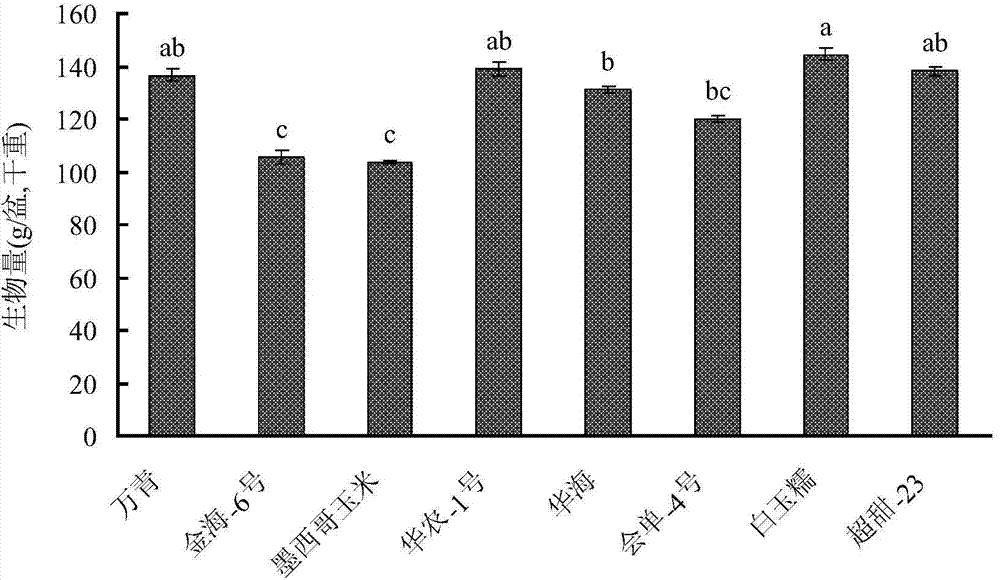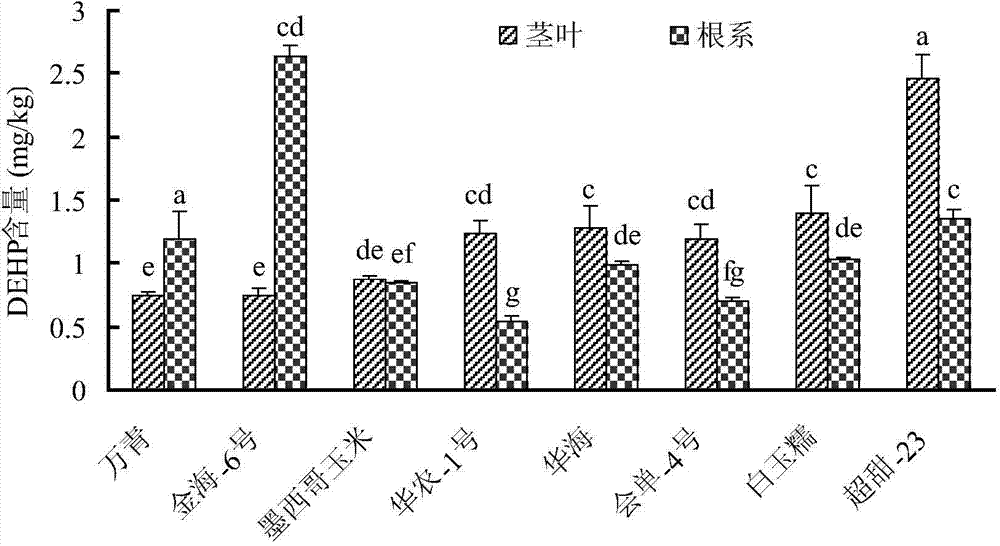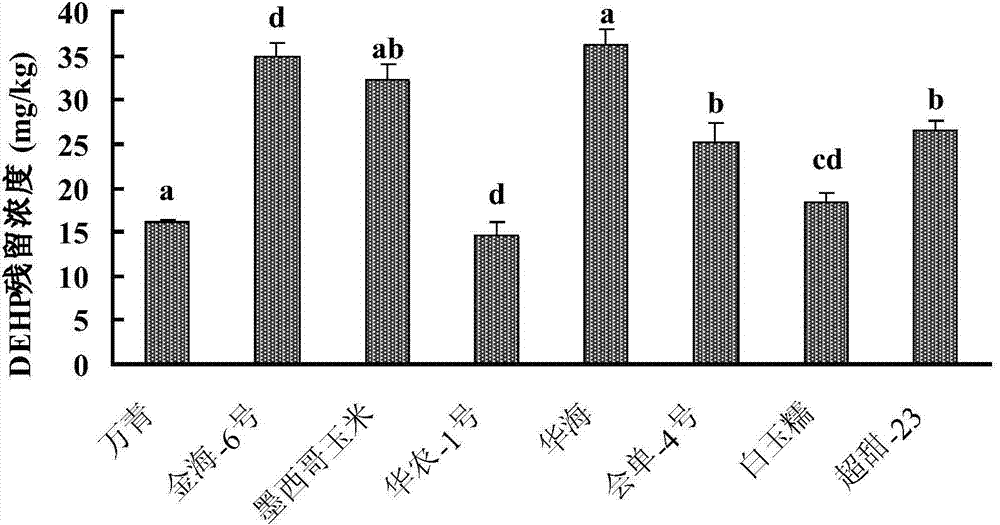Phytoremediation method for soil polluted by phthalic acid ester
A technology of phthalates and polluted soil, applied in the direction of restoration of polluted soil, etc., can solve problems such as rarely reported methods, and achieve the effects of avoiding excessive residue, fast growth, and promoting degradation.
- Summary
- Abstract
- Description
- Claims
- Application Information
AI Technical Summary
Problems solved by technology
Method used
Image
Examples
Embodiment 1
[0038] Embodiment 1: the pot test that carries out indoors
[0039] (1) The paddy soil was air-dried and crushed to prepare DEHP-contaminated soil.
[0040] (2) Put the DEHP-contaminated soil into porcelain pots, and block the outlet holes at the lower end with window screens and broken porcelain pieces. Each pot uses 4Kg of soil, and the initial concentration of DEHP in the soil is 117mg / Kg.
[0041] (3) Irrigate the soil with tap water until the soil is moist. After the soil is dry (the 5th day after potting), pour it out, break it up and mix it well before potting it.
[0042] (4) There are 8 varieties of corn planted, including Wanqing, Jinhai-6, Mexican corn, Huanong-1, Huahai, Huidan-4, Baiyunuo and Chaotian-23. The selected uniform and plump corn seeds are disinfected and cleaned with 0.1% mercuric chloride.
[0043] (5) Sowing seedlings: Use river sand as the seedling substrate, put the seedling substrate into the seedling board, spread it flat, then sow the steriliz...
PUM
 Login to View More
Login to View More Abstract
Description
Claims
Application Information
 Login to View More
Login to View More - R&D
- Intellectual Property
- Life Sciences
- Materials
- Tech Scout
- Unparalleled Data Quality
- Higher Quality Content
- 60% Fewer Hallucinations
Browse by: Latest US Patents, China's latest patents, Technical Efficacy Thesaurus, Application Domain, Technology Topic, Popular Technical Reports.
© 2025 PatSnap. All rights reserved.Legal|Privacy policy|Modern Slavery Act Transparency Statement|Sitemap|About US| Contact US: help@patsnap.com



